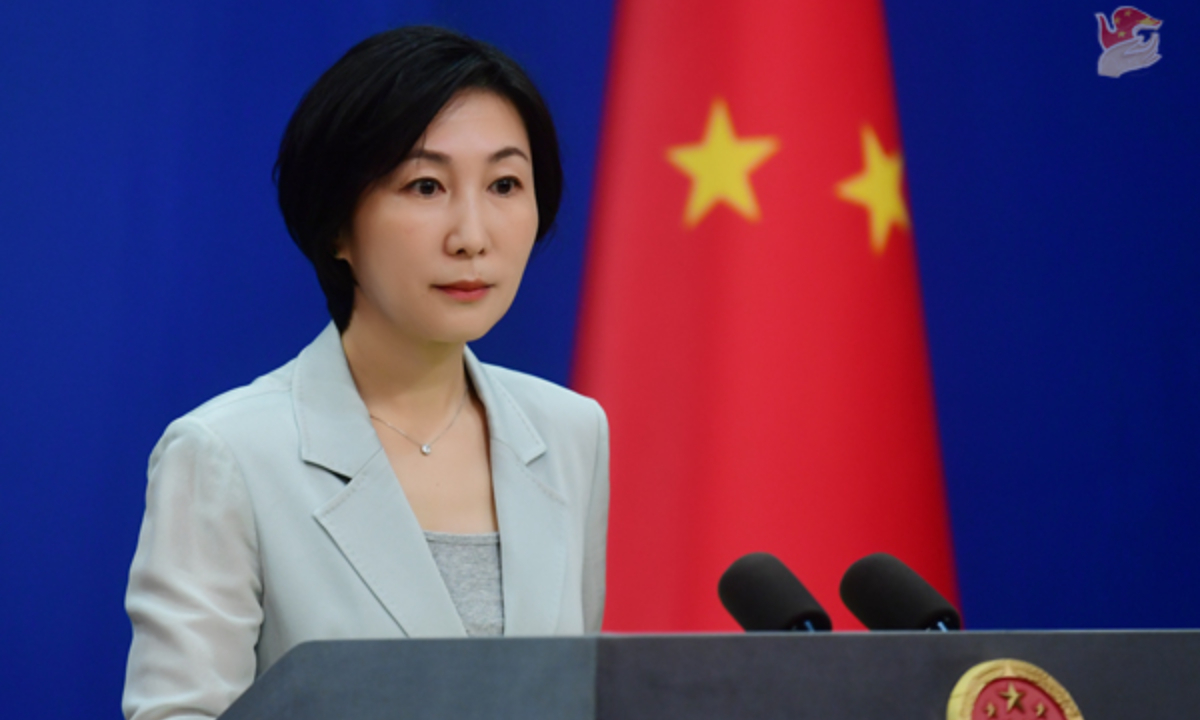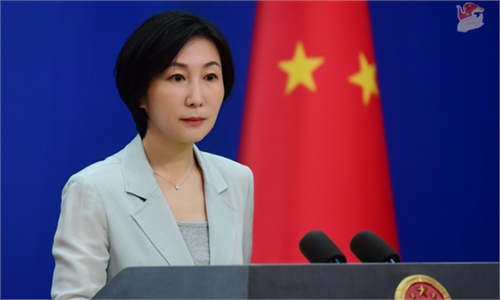China has sufficient medical supplies; epidemic situation within forecasts and controllable: FM

Foreign Ministry Spokesperson Mao Ning Photo: Ministry of Foreign Affairs
Overall medical supplies in China are sufficient and the epidemic situation is within forecasts and controllable, a spokesperson of the Chinese Foreign Ministry said on Friday, adding that China continues to share related information with the World Health Organization (WHO) and the international community in a responsible manner.
Since the COVID-19 outbreak, the Chinese government has adhered to the concept of putting people and life first, and formulated epidemic prevention policies that are based on the nation's situation and in line with the interests of the majority of the people, Foreign Ministry spokesperson Mao Ning said at Friday's routine press briefing. Those policies effectively protected the lives and health of the people when the coronavirus was at its highest level of threat.
As the epidemic enters a new stage, China has actively optimized prevention and control measures to ensure policies are more scientific, accurate and effective.
Currently, vaccination rates continue to increase, the treatment capacity continues to improve, the production capacity of medical supplies continues to expand, and overall supply is sufficient, Mao said.
According to official data, by early December, more than 90 percent of the Chinese population had been fully vaccinated. More than 86.6 percent of people aged above 60 and 66.4 percent of those above 80 have completed their vaccinations.
The spokesperson said the overall epidemic prevention and control situation in China is within forecasts and controllable, and that a new stage of economic and social development can be ushered in based on the unity of the Chinese people in their response to the new situation.
China has been sharing related information with the WHO and international community in a responsible manner and is willing to continue working in solidarity with the world to better respond to the challenges of the epidemic, better protect people's lives, jointly push forward the steady recovery of the economy, and promote the building of a community of common health for mankind.
After China adjusted its epidemic control strategy, focusing more on preventing severe cases rather than infections, many Western media have been hyping the situation in the country, including exaggerating the shortage of medical supplies and personnel, and bad-mouthing China's economic prospects.
Those hostile voices will always find an angle to attack China's prevention and control of COVID-19, as they have done in the past three years, analysts said.
However, Chinese people are standing in unison to withstand the wave of massive infections and striving to take the opportunity for economic recovery, they said, adding that no external attacks can shake the public's confidence in overcoming the challenges.
Amid worries of a surge in severe cases and deaths in the following weeks, which usually arrives later than the infection peak, health experts also emphasized that the lower pathogenicity of the Omicron variant would be a favorable condition in the battle against the virus.
Wu Zunyou, top infectious disease specialist for China's CDC, predicted at the Caijing Annual Conference on December 17 that between 10 and 30 percent of Chinese people may get COVID-19 this winter, with a risk of death of between 0.09 and 0.16 percent.
The Global Times learned from a frontline medical worker in Beijing who requested anonymity that she and many of her colleagues have recovered from COVID-19 and returned to their posts for normal work.
Other cities may experience a harsh time later when infections peak, but the difficulty can be overcome as long as we stand in solidarity, she said.

